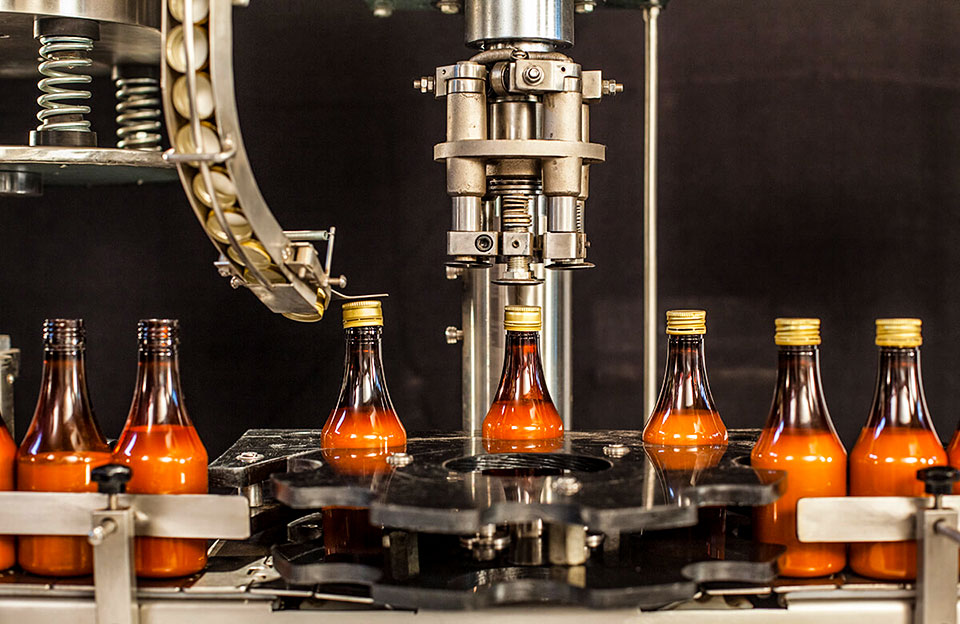Today’s consumer demand for anti-counterfeiting technology is growing, stemming from their concern for product authenticity, quality assurance, and personal rights. Anti-counterfeiting technology provides the means to verify the authenticity of products and enhances shopping confidence. This technology can protect personal rights, encourage brand loyalty, avoid false publicity, and satisfy social responsibility. This gives consumers a more secure shopping experience in a highly competitive market environment. Anti-counterfeiting capping machines are effective combination of capping machines and anti-counterfeiting technology, which can enhance consumers’ shopping information.
Types of Anti-counterfeiting Technology
Anti-counterfeiting technology covers a variety of methods and means to ensure the authenticity of products and prevent counterfeiting. Here are some common types of anti-counterfeiting technologies:
- Barcodes and QR codes: Print unique barcodes or QR codes on product packaging that consumers can scan to verify the product’s authenticity and obtain information about the product.
- Security Labels and Seals: Using special security labels, seals or seals, these markings are often difficult to reproduce, making them difficult for counterfeiters to counterfeit.
- RFID Technology: Radio frequency identification technology can embed microchips in products or packaging and verify them through radio frequency readers to realize wireless identification and tracking.
- Hologram: A hologram is a visual effect applied on a label or package that is very difficult to replicate and can visually verify the authenticity of a product.
- Watermarks and Textures: Add special watermarks or textures to product packaging. These features are difficult to imitate, and consumers can identify them with the naked eye or touch.
- Chemical fluorescent agent: Apply fluorescent agent on the product or packaging, which can only be seen using a specific light source, verifying the product’s authenticity.
- Digital Signature and Encryption: By applying digital signature and encryption technology, it is ensured that product information is not tampered with during transmission, thereby verifying the source and authenticity of the product.

Anti-counterfeiting Technology
Functions of Anti-counterfeiting Capping Machines (Application of Anti-counterfeiting Technology in Capping Machine)
The anti-counterfeiting capping machines combine capping machine technology and anti-counterfeiting technology, aiming to ensure the authenticity, quality, and safety of products. The following are the functions of the anti-counterfeiting capping machines and the application of anti-counterfeiting technology in the capping machine:
- Unique Identification and Serial Number: The anti-counterfeiting capping machine can print a unique serial number, barcode, or QR code on the packaging of each product, and consumers can verify the authenticity and source of the product by scanning it.
- Intelligent Identification and Verification: Some anti-counterfeiting capping machines are equipped with a visual recognition system, which can detect specific marks on product packaging, ensure the correct capping of each product, and verify its authenticity.
- Capping Data Record: The anti-counterfeiting capping machine can record the capping time, location, and operator information of each product, providing data support for product traceability.
- Security Labels and Seals: Capping machines can apply special security labels or seals to ensure that the product’s packaging has not been tampered with, and consumers can verify the product’s authenticity through the integrity of the label.
- Secondary Verification Means: Some anti-counterfeit capping machines can be connected to consumers’ smart devices and scanned or connected to an application for secondary verification to ensure the product’s authenticity.
- Application of Anti-counterfeiting Materials: The capping machine can be used with anti-counterfeiting materials, such as special paper, ink, or printing technology, to achieve anti-counterfeiting effects, such as holograms, fluorescent signs, etc.
- Integrated Traceability System: Some anti-counterfeit capping machines can be integrated with the product traceability system to realize product traceability from production to sales and support supervision and quality control.
- Intelligent Monitoring and Alarm: The capping machine can be equipped with sensors and a monitoring system to monitor abnormal conditions during the capping process, such as insufficient capping force, position deviation, etc., and issue an alarm.
- Special Effects and Identification Features: Some anti-counterfeit capping machines can apply special effects when capping products, such as micro-text, texture, etc. These features are difficult to be counterfeited.
- Data Analysis and Reporting: Some anti-counterfeiting capping machines can collect data on the capping process and generate reports to help companies analyze and improve the production process.

Anti-counterfeiting Capping Machines in Modern Production
The Role of Anti-counterfeiting Capping Machines
The anti-counterfeiting capping machine incorporates anti-counterfeiting technology in the product capping process, aiming to ensure the product’s authenticity, quality, and safety. By applying methods such as unique identification, visual identification, and special capping identification, the anti-counterfeiting capping machine can verify the source and authenticity of each product, prevent counterfeit and inferior products from entering the market, protect consumer rights, enhance product trust, and improve production at the same time Process supervision and traceability.
Changes in the Future Market Demand for Anti-counterfeiting Capping Machines
- Higher Level of Intelligent Requirements: With the continuous development of intelligent technology, the future market demand for anti-counterfeiting capping machines will increasingly tend to higher levels of intelligence. This includes further enhancing the visual recognition system to detect more anti-counterfeiting marks and integrating artificial intelligence algorithms to improve detection accuracy and efficiency.
- More Data Analysis and Traceability Functions: The future market demand for anti-counterfeit capping machines may emphasize data analysis and product traceability functions more. This means capping machines need to be able to collect and organize data from the capping process so companies can better understand production processes, optimize operations, and meet regulatory and compliance requirements.
- More Interconnection: With the development of the Internet of Things, the future market may have a higher demand for anti-counterfeiting capping machines interconnected with other production equipment, supply chain systems, and consumer smart devices. This will enable seamless data sharing and product verification, enhancing full product traceability.
- Integration of Multiple Anti-counterfeiting Technologies: The future market demand for anti-counterfeiting capping machines may tend to integrate multiple anti-counterfeiting technologies to provide stronger anti-counterfeiting protection. Not only visual recognition, but it may also cover sound recognition, optical features, biometrics, and other technologies to improve the overall anti-counterfeiting effect.
- Requirements for Environmental Protection and Sustainable Development: With the increasing awareness of environmental protection and sustainable development, the future market may put forward higher requirements for the design and materials of anti-counterfeiting capping machines, requiring more environmentally friendly, recyclable materials and energy-saving Emission reduction design.
Conclusion
The anti-counterfeit capping machines play a key role in the modern business environment, ensuring the accuracy of product capping and, more importantly, protecting the authenticity, quality, and consumer rights of products through anti-counterfeit technology.
It not only helps prevent counterfeit and shoddy products from entering the market and reduces the losses of enterprises and consumers but also builds brand trust, maintains market order, and promotes the market’s healthy development. At the same time, the anti-counterfeiting capping machine also has important functions in meeting regulatory requirements, strengthening traceability, and improving consumer experience, contributing to the sustainable development of enterprises and market reputation.


